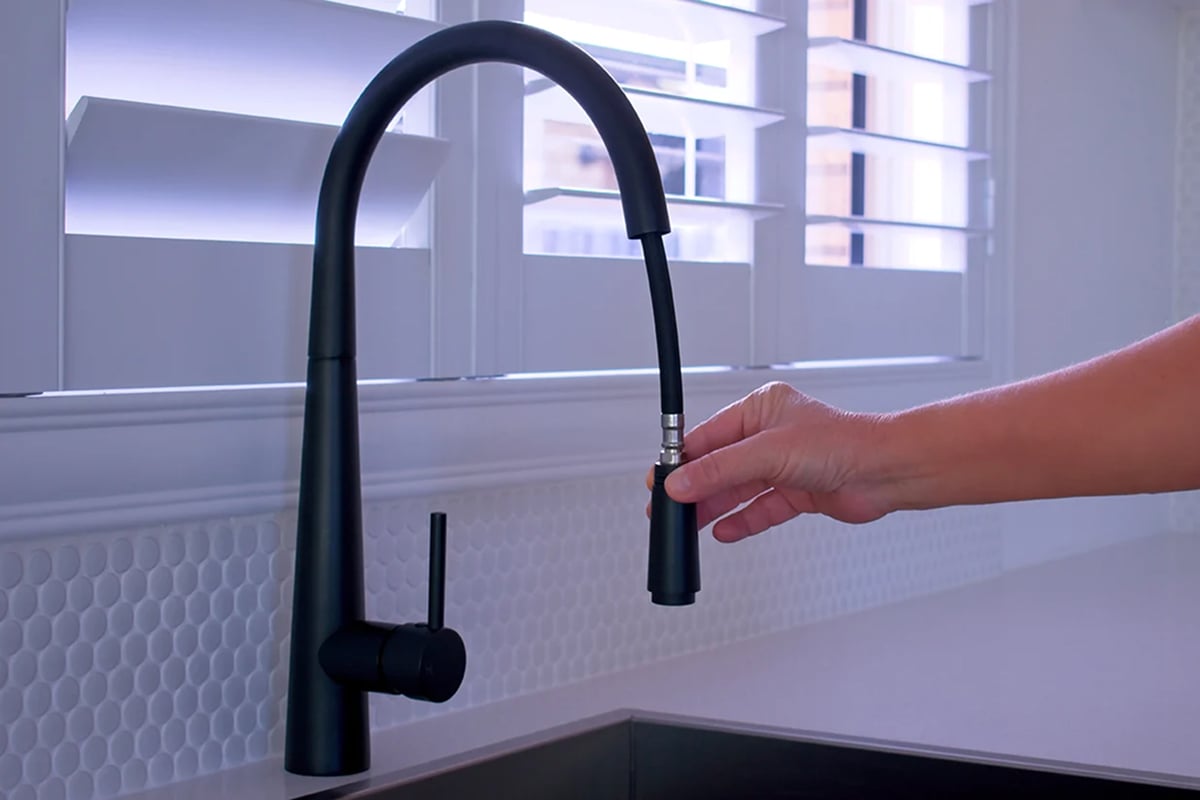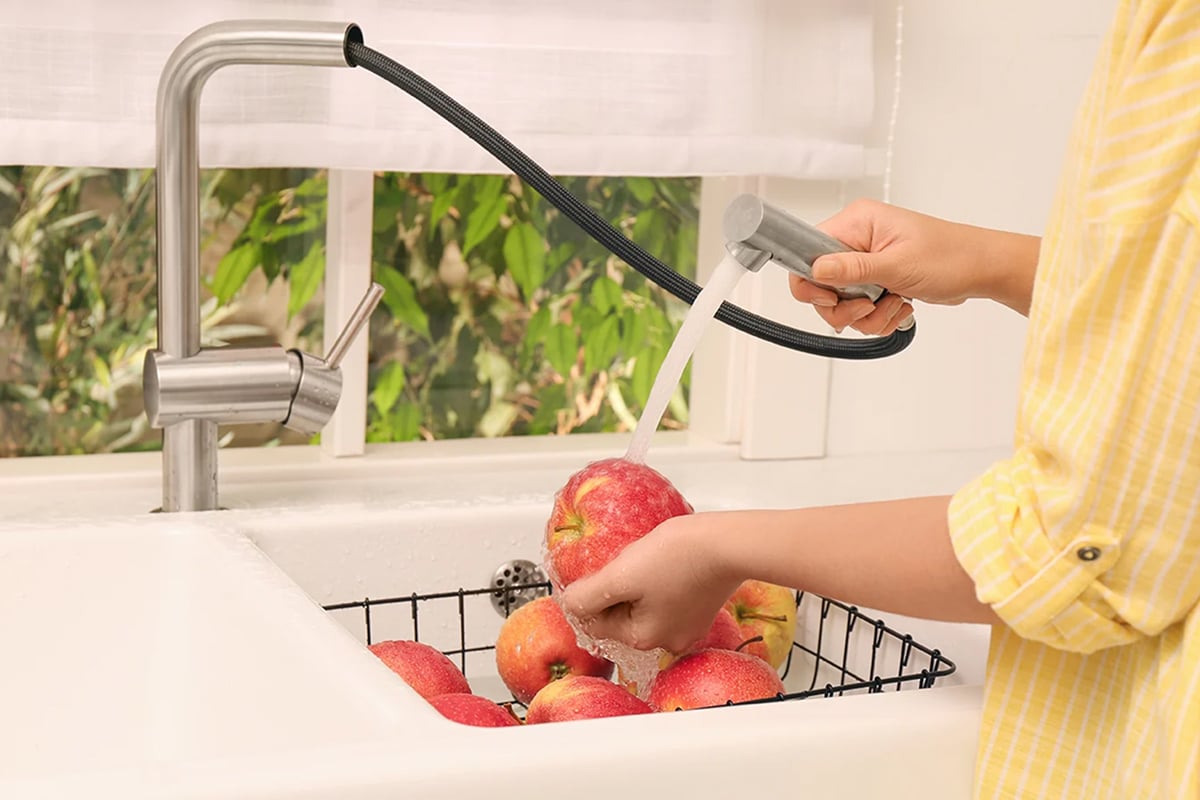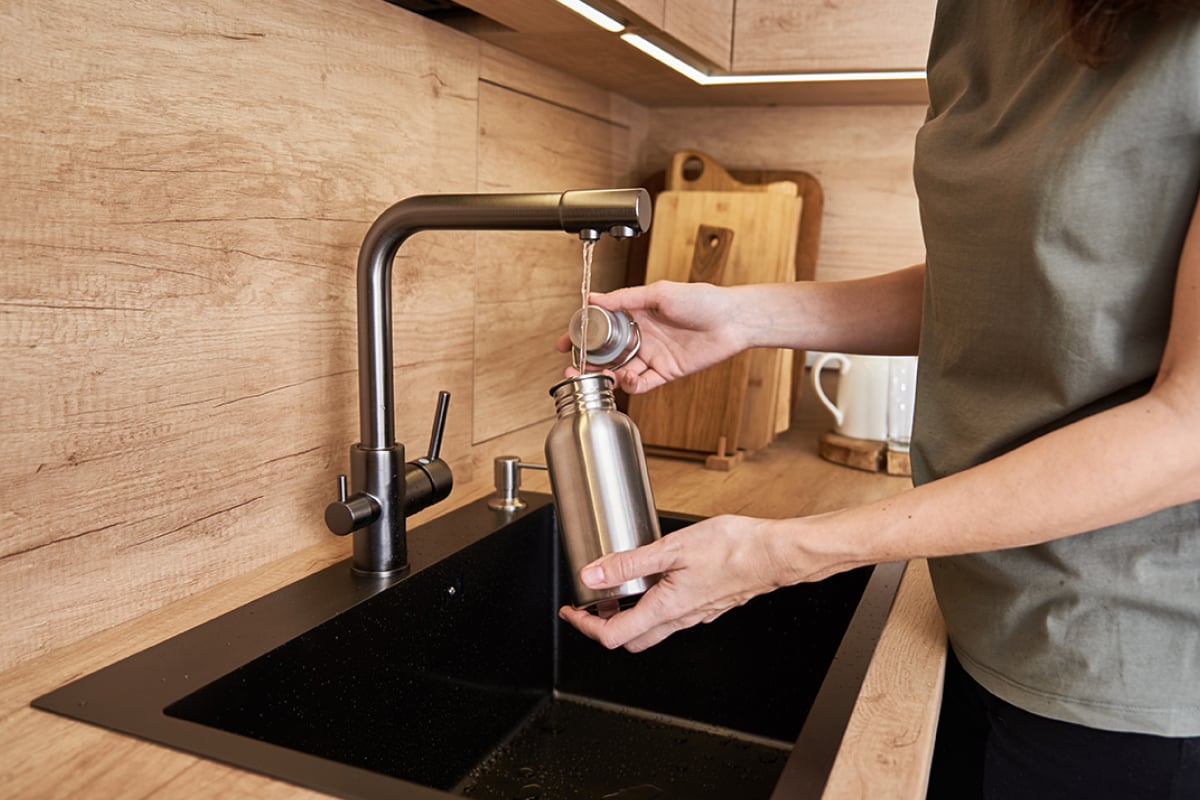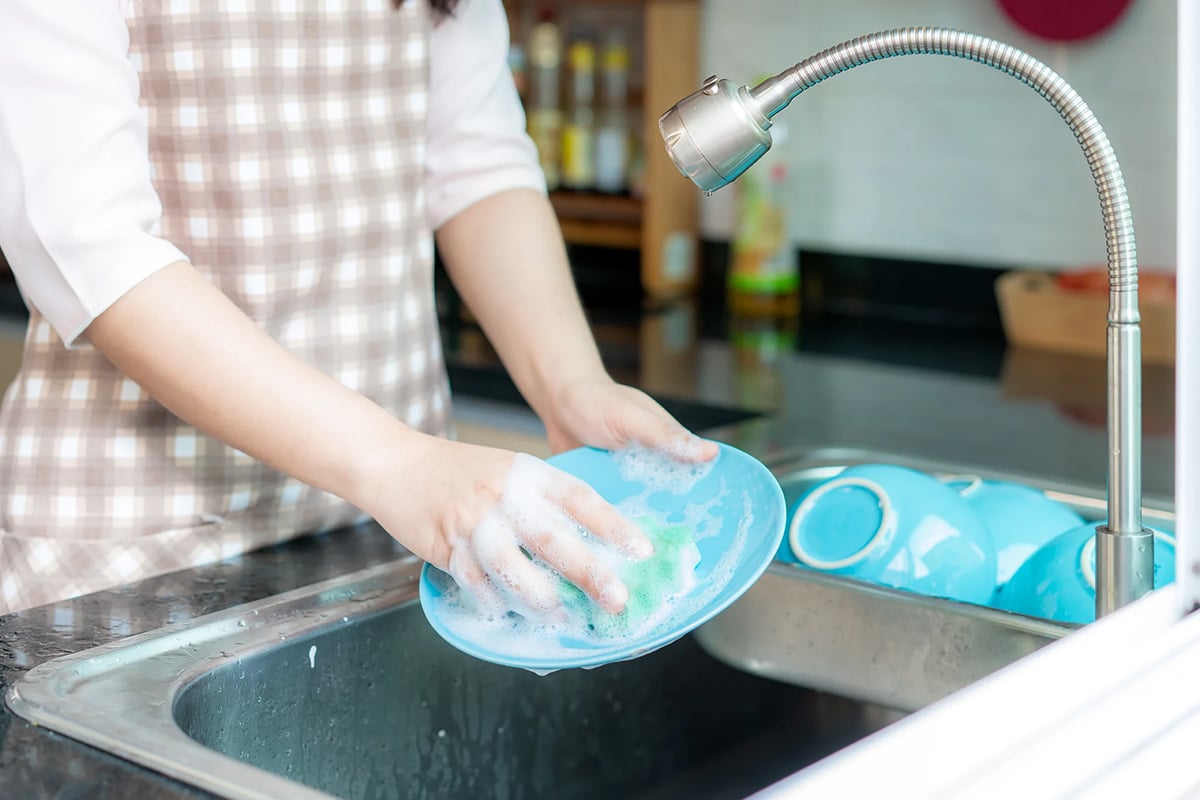Planning your kitchen renovation is exciting. There are many details to consider, from countertops to cabinetry, but some of the most challenging choices can involve the smallest items.
Choosing the right kitchen faucet is crucial for improving your kitchen's flow. With numerous options available, knowing where to start can be difficult.
The best kitchen faucet is subjective. Certain styles work better in smaller or larger kitchens, depending on the sink basin's depth. It also depends on how you plan to use your kitchen.
We've compiled four popular types of kitchen faucets and the reasons you should choose them for your kitchen remodel—or why they might not be the perfect fit for you!
Pull-Out Faucet

Very similar to the pull-down faucet, a pull-out faucet features a detachable head and hose. Unlike its pull-down counterpart, the pull-out faucet can be pulled in almost any direction, with the hose spraying toward the user rather than down into the sink.
Pros: This type of faucet is ideal for kitchens with limited sink space, especially those struggling to fill large pots. Instead of maneuvering the pot into a small sink, the flexible pull-out faucet allows it to be filled on the countertop. Many styles also include buttons on the detachable handle to control water flow strength and temperature.
Cons: There can be a tendency for splashing, particularly with a small sink basin. The outward-facing sprayer makes it easy to get unwanted water all over the kitchen and yourself.
Single-Handed Faucet

Single-handle faucets are the most common type of faucet found in homes and public places alike. The handle in question has seen many different designs over the years, most notably as a ball, a ceramic disk, or a cartridge. This is a simple, straightforward type of faucet that’s stuck around for so long for good reason.
Pros: If you’re looking for a reliable faucet without too many bells and whistles, this is the choice for you. It’s relatively easy to install, very reliable, and if you do manage to break it, it doesn’t typically cost much to repair. The beauty of this faucet is in its simplicity; it’s the easiest of any type of faucet to navigate with no learning curve required.
Cons: Simplicity does have its drawbacks. Not usually boasting the latest in plumbing technology, a single-handle faucet tends to take longer to change the temperature of the water. Many households also opt for a separate sprayer hose for their sinks in addition to this faucet, which can complicate plumbing.
Double-Handle Faucet

As another type of faucet with a long history of use, the double-handle faucet is almost as common and popular as its single-handle counterpart. The dual handles work together as separate connections for hot and cold water, allowing quicker temperature changes than the single-handle design.
Pros: In addition to offering greater control over water temperature, a double-handle faucet has a built-in contingency plan if one handle breaks. The faucet will still function and can be used while the broken handle awaits repair. Like the single-handle faucet, a double-handle faucet is very simple to install.
Cons: Despite being relatively durable, this faucet is not indestructible. Repairing a broken double-handle faucet can be expensive due to the numerous parts involved, some of which can be quite pricey to replace.
Hands-Free or Motion-Detect Faucet

While the last two types of faucets have been well-loved for decades, the hands-free or motion-detect faucet is a leading-edge innovation that’s the up and coming star in many modern kitchens. With no handles at all, the faucet is equipped with a sensor in the tap’s body to identify movements to trigger the flow of water.
Pros: The obvious benefit of this high-tech faucet is in the name; while preparing a meal or cleaning up a mess, you’re still able to turn on the water while your hands are covered in grease or grime. This feature is a lifesaver for many busy households and is a lifesaver in the cleanup process. For a new kitchen remodel, the hands-free faucet looks sleek and clean, not to mention very up to date!
Cons: Because this type of faucet is the newest innovation in kitchen plumbing technology, it’s also the most expensive. Plus, if something were to break, the system is much more complex than other types of faucets and is quite difficult to repair. These are some significant downsides for frugal homeowners, though not a dealbreaker for everyone.
Kitchens By Oaks
At Kitchens by Oaks, you will work with a designer who will create a custom design for your home, complete with features tailored to your needs. Our designers will help you through your remodel and make the process as efficient as possible. Contact our team to make an appointment today.



